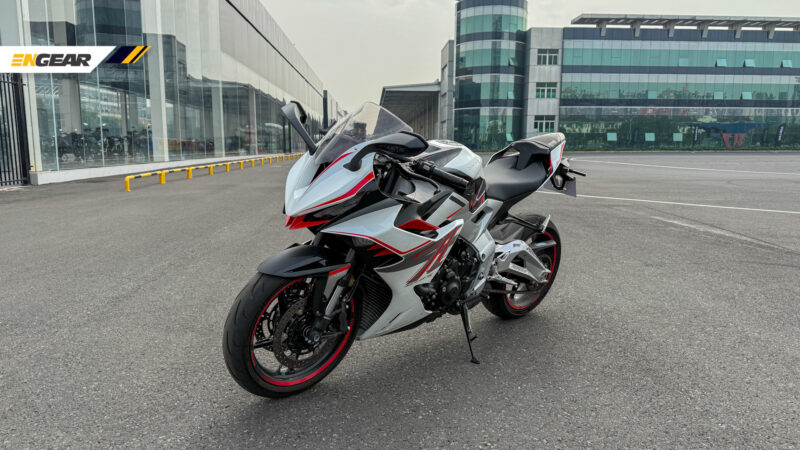When the name Zontes is mentioned, many will certainly recall the Zontes 368G ADV adventure scooter that recently entered the Malaysian market early last year.
However, if we look back five years ago, it was a name that was quite unfamiliar, especially at a time when many well-known motorcycle brands had already established themselves here.
For your information, Zontes is one of over 200 motorcycle brands in the Chinese market and is also one of the brands owned by Guangdong Tayo Motorcycle Technology Co. Ltd, which was established in 2003.
There, Zontes is responsible for producing a range of medium and large displacement motorcycles, and the brand has now established a presence in several key markets worldwide.
At the end of 2024, our team along with a group of other automotive media had the opportunity to visit the Tayo factory located in Guangdong, China.
There were several interesting things we noticed during our visit to this state-of-the-art factory:
1. Before entering the factory, one must go through a door that resembles a military base seen in sci-fi stories. It can be activated through a facial recognition process.
2. Tayo Factory has nearly 4,000 employees, with 60 percent being graduates with college degrees or higher—primarily young people!
It is not surprising that we see their product lineup consistently featuring fresh specifications.
3. Of that number, approximately one thousand are placed in the research and development (R&D) department. Some were seated in front of computers, while we noticed some of them working on motorcycle models made of clay.
Unfortunately, we were not allowed to photograph those models.
4. Zontes also handles complaints about motorcycle components received from owners, including those from overseas, where the responsible engineers must resolve the issues within 24 hours (only on working days).
5. The Tayo Factory has up to 12 production lines responsible for manufacturing various motorcycle and scooter models.
6. According to the officials on duty, Zontes produces all engine components (including the crankshaft, engine outer casing, gears, and balancers) used in their motorcycle model lineup without assistance from third parties.
7. 60 to 70 percent of motorcycle components (excluding engines) are also produced in-house at this factory, including swingarm units, body panels, seats, and display screens.
Only components like tires and suspension systems are imported from external suppliers.
8. As a sophisticated factory, advanced robotic technology is fully utilized for manufacturing tasks such as forming aluminum and plastic components, welding frames and fuel tanks, as well as painting parts.
9. To ensure high-quality workmanship, the Tayo factory imports several special robots from overseas and programs them specifically for the factory.
For example, there are plastic component printing machines from Germany, painting robots from Japan, CNC machines from Germany, and Panasonic-weld robots (from Japan).
10. The welding unit in the factory can complete an entire Zontes 368 scooter frame in just 210 seconds, without human assistance!
11. To ensure that every produced component meets standards, there are rapid scanning machines available to check quality while the manufacturing process is still ongoing.
If the machines detect any issues, production on that line will be halted immediately.
12. Is the existing technology sufficient?
No, because we were informed that Tayo has invested RMB 5 billion (approximately RM3 billion) to fully utilize autonomous robots to help increase production volumes.
Moreover, during our visit, we also witnessed the installation processes for new machines and robots that were underway in the factory.
Given the level of sophistication and precision displayed, and hopefully with solid sales and after-sales support, it is not impossible for the Zontes brand to one day stand out even more in the Malaysian market.
